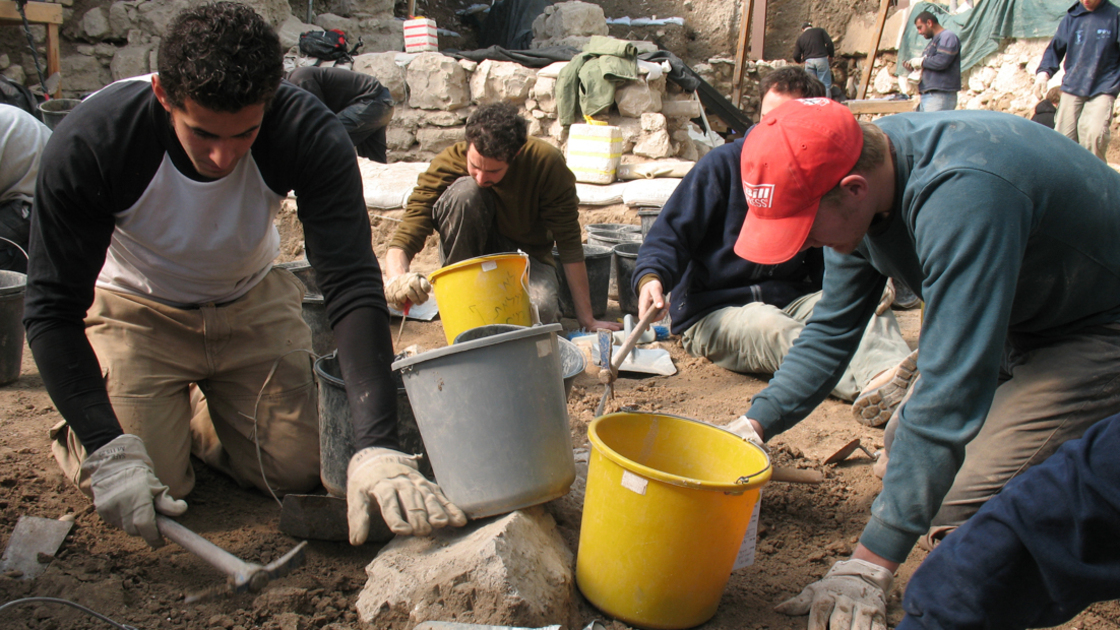Mention the word archaeology, and if you’re like me, Indiana Jones is one of the first things you think of. That’s funny because to any “proper” archaeologist, Dr. Jones is, dare I say, an abhorrence—more of a grave robber. What is the problem with him?
Context.
Context is an archaeologist’s best friend. Without context, most finds, if not all, are of lesser or worthless value. Context is something that Dr. Jones largely ignores (for the sake of keeping the movies interesting, I guess). Yet it is a principle that archaeology is built upon! And it is alsoone principle that our lives are built upon.
Let me illustrate. You may remember the amazing find recently revealed from Dr. Eilat Mazar’s Jerusalem dig—that of Hezekiah’s bulla. It is an amazing artifact that documents the names of two important father-son kings of Judah: Ahaz and Hezekiah. It is further astounding scientific proof of the veracity of the Bible.
But did you know that a number of these Hezekiah bullae had already been found? That’s right—other bullae of Hezekiah already existed, bearing the same motifs. What, then, makes Dr. Mazar’s so special?
Context.
These other bullae, among other artifacts, are part of a large number of items that show up on the “antiquities market” from time to time. They are bought and sold, and many of them may well be legitimate—but nobody knows where they came from. Nobody knows if they are authentic! They were not excavated from the ground scientifically. Therefore, doubts exist. No significance or value can be given to them, because we don’t know if they are real or not! They were not found in context.
Archaeology is all about finding amazing things and being able to provide a date for them. This date for the item is proven by the context of the ground it was found in. Another of Dr. Mazar’s impressive finds is Solomon’s wall—a massive structure, built of large, impressive stones. But how did Dr. Mazar know it belonged to Solomon’s time? The date certainly wasn’t inscribed on the stones! The context of the soil layers abutting the structure provided that date.
One of the chief ways to find the date of these soil layers is through pottery reading. The shape, design, and materials that pottery is made out of reveal very specifically the time period to which they belong. You could say pottery is very much like the cars of today (bear with me!)—it’s pretty easy to tell what year a certain model of car belongs to based on the design. The same is true with pottery. Over the last century, archaeologists have collated a huge record of different pottery types that belong to different periods. Persian-period pottery. Herodian pottery. Byzantine. Islamic. And relating to the biblical kingdom of Israel, we have Iron I (basically the time of the Judges), Iron IIa (David and Solomon), and Iron IIb (the divided kingdom period).
The Solomonic wall was dated by the soil abutting it, full of Iron IIa pottery—Solomonic “stuff.” This soil was the context. Without this context, Solomon’s wall would be worthless—it could just as well have been a Herodian or Byzantine wall, a thousand years younger. Indiana Jones’s idea of “yanking stuff out of the ground” destroys any evidence of context associated with the find—and thus makes his efforts far more futile (although if we had arrows, boulders, savages, quicksand, Nazis or kgb agents coming at us while we were digging, I’m sure we too would probably be a lot more quick about pulling stuff out of the ground!).
Anyhow, I think you get the picture. And context isn’t just important in archaeology. It is an important principle for everyday life. Events, comments and conversations taken out of context can be interpreted completely the wrong way—just like archaeological finds. They can be extremely damaging, and on a national scale, can even be the cause of war!
It is also the cause of mass religious deception. By cherry-picking scriptures and taking them out of context, a great majority of religious leaders have done away with numerous laws that were never intended to be ignored—laws concerning the holy days, clean and unclean meats, etc. As we are taught at Herbert W. Armstrong College, if you come across a confusing or apparently “contradicting” scripture, read on! The context of the passage explains the meaning of the individual verses. The context gives it real value. Much of the time, the only reason there are apparent “confusing” scriptures in the first place is because people in the past have taken them out of their original context!
Here’s another example of the danger of mistaken context. I was recently looking for evidence on a certain ancient writer’s reliability and accuracy as a historian. One author, seeking to prove this man’s credibility as a historian, quoted a source saying he “ranks among the leading writers in world literature.” Sounded good! I searched the original source for proof and found in the very next paragraph: “Notso, however, is his merit as a historian.” This original source had been taken completely out of context by an author wanting to “prove” a completely oppositepoint! Seeing the original context showed reality. When an archaeological artifact, a quote, a scripture or a comment is taken out of context, then it is practically worthless. But when it is preserved incontext, that is when it becomes precious and conveys real meaning!
The Apostle Paul says, “Prove all things; hold fast that which is good” (1 Thessalonians 5:21). Don’t just take things at face value. Usually, “face value” doesn’t actually have any real value! Proper context gives something real value. So in life, in conversation, in Bible study (and in any archaeology you find yourself doing!), make sure you prove the context, and then, when you do, hold fast to it—because then it is good and of real value.
